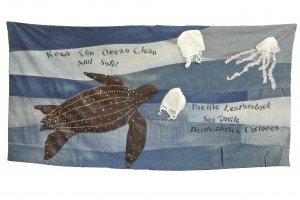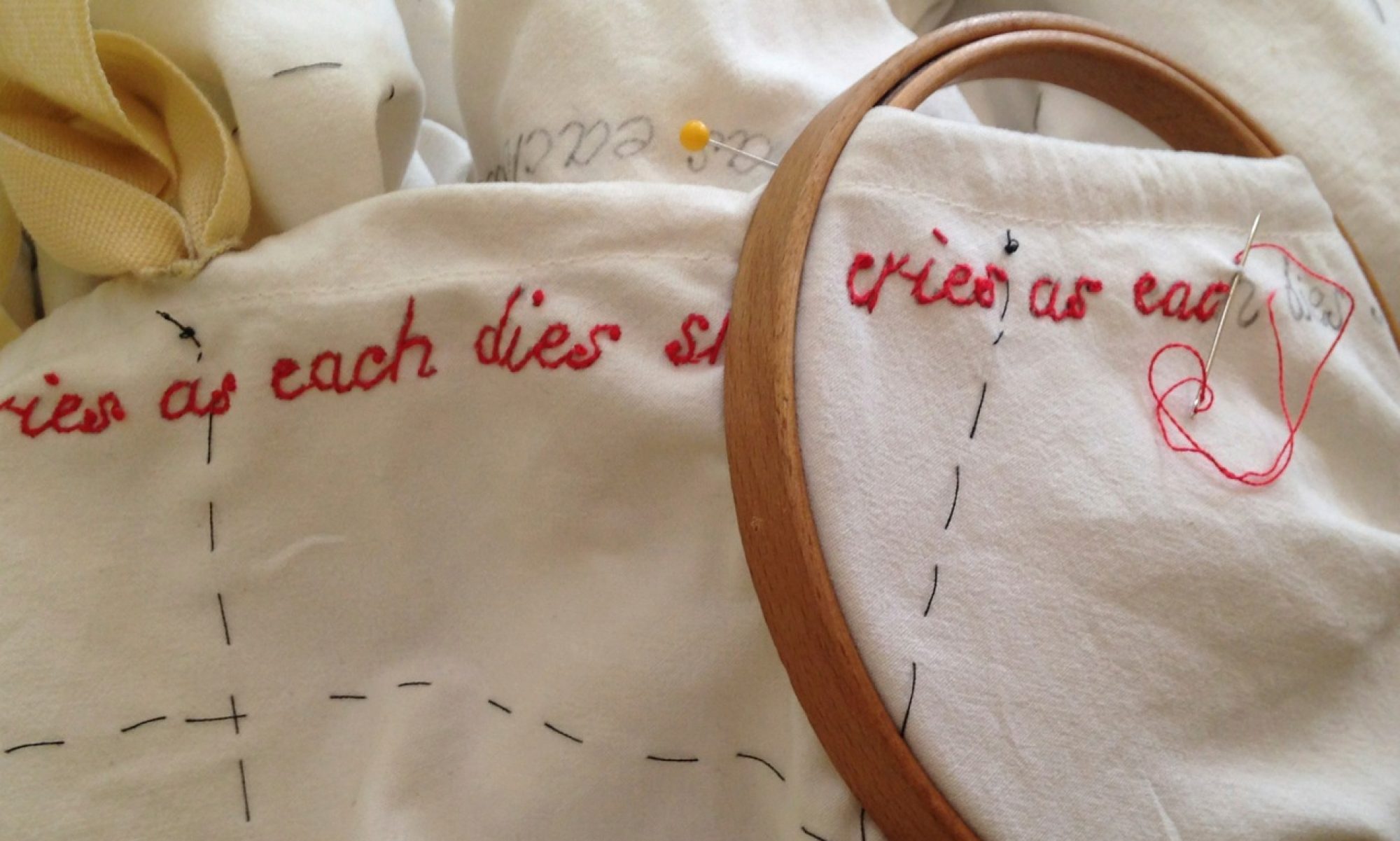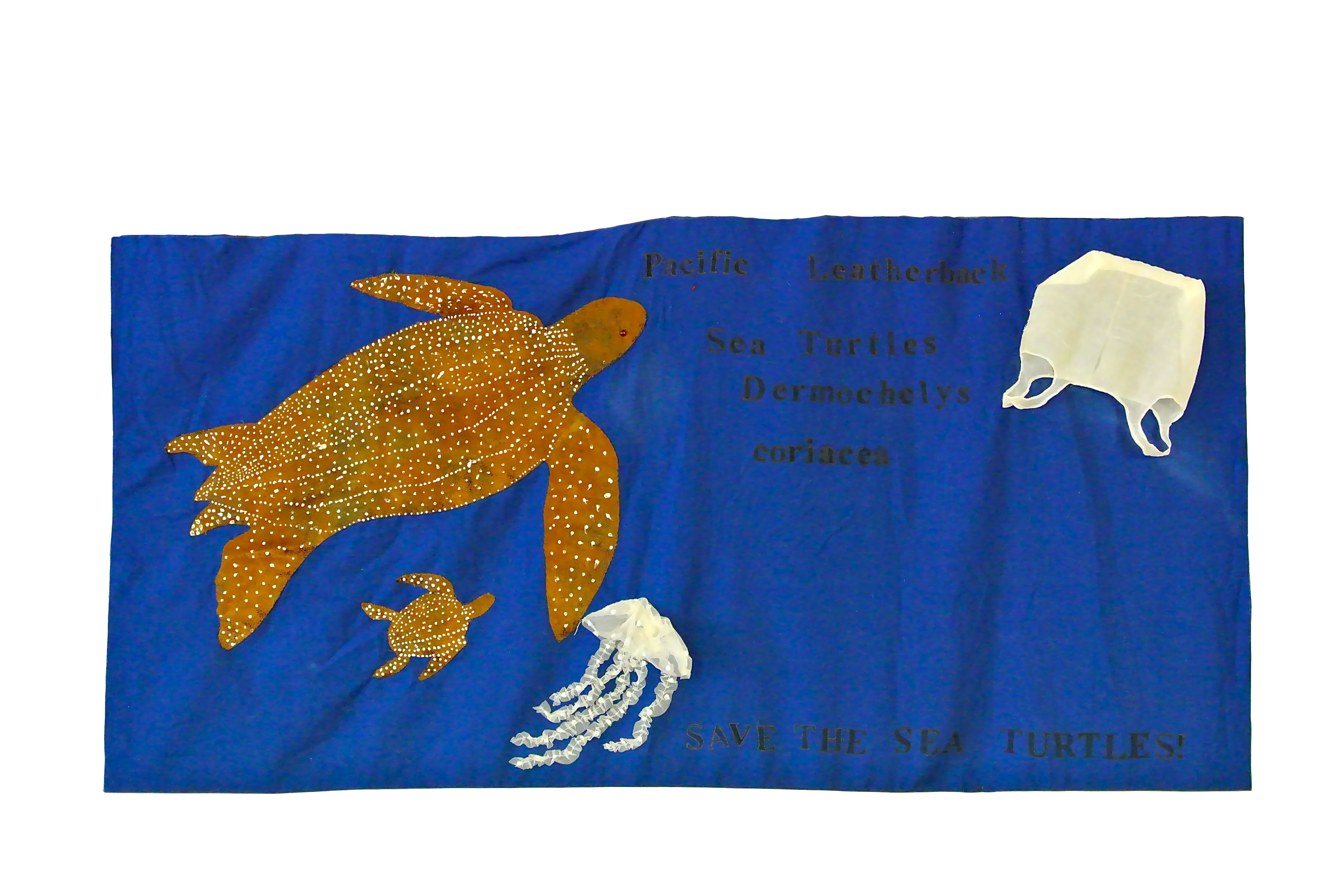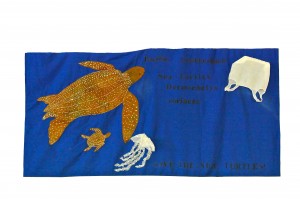This is the “extra” panel we made as part of our school quilt project at Thomas Starr King Middle School in the spring of 2013. This panel was not included in either quilt block, but was made specifically for Dr Chris Pincetich, the Outreach and Education Manager at Turtle Island Restoration Network. Students from both classes worked on this panel, and it was delivered to the TIRN offices in Northern California during the summer.

Background made of old jeans sewn together on a 1906 Singer treadle machine. Sea turtle, jellyfish, and plastic bags made from remnant fabric donated by the Center Theater Group Costume Shop. Fabric paint and rubber stamps.
To learn more about Turtle Island Restoration Network go to:
or


